If you’re like me, perhaps you’ve come to accept the fact that your internal tape measure isn’t entirely accurate, and you’re not the best judge of the distance between you and your target. If you’re a hunter, that inaccuracy will lead to missed shots and empty freezers.
With all the options out there, it can be difficult to confidently select one of the best hunting rangefinders to help solve your measurement problem.
After personally trying out multiple laser rangefinders, I have settled on two clear winners at different price points that offer the most bang for your buck.
DISCLOSURE: As an Amazon Associate I earn from qualifying purchases. Links in this article are affiliate links. If you click on a link we may earn a commission if you make a purchase, at no additional cost to you.
Best Rangefinders for Hunting: Outdoor Empire Reviews
My favorite rangefinders for hunting are the Leupold RX-1400i TBR/W and the Maven RF.1. These offer the best cost-benefit compared to others in their price range. High-quality optics, easy-to-read displays, and features for both rifle and bowhunters mean you can’t go wrong with either one.
Besides these, there are a few runners-up that I would not hesitate to recommend.
When you’re in the field or at the range, you need to know the distance between you and your target so you can line up an accurate shot. Read on to know what to look for in a hunting rangefinder and why we make the recommendations we do.
Ultimately, the decision-making criteria that I consider when buying a laser rangefinder for hunting are:
- Optics Quality
- Display
- Form Factor
- Ruggedness
- Features
- Value
We looked at each of these factors for every rangefinder we reviewed and we calculated a composite score out of five points for each.
This score compared against the product’s price point and alternatives are how we ranked the products as we did.
| Best for the Money | Upgrade Pick | Also Great | |
|---|---|---|---|
| Product | 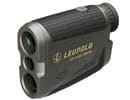 Leupold RX-1400i TBR/W | 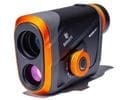 Maven RF.1 |  Leupold RX-1600i TBR/W |
| Outdoor Empire Score | 4.5 | 4.7 | 4.5 |
| Optics Specs | 5 x 21 mm | 7 x 25 mm | 6 x 22 mm |
| Max Range to Deer | 950 yards | 2700 yards | 1000 yards |
| Warranty | 2 year limited | Unconditional lifetime | 2 year limited |
| Benefits | – Red display is easy to see in any light condition – Easy to use and operate with solid documentation | – Intuitive controls and display are easy to use – High-quality laser sensor with longer max range than competition | – Rugged, lightweight aluminum chassis – Has upgraded glass and specs compared to the RX-1400i |
| Drawbacks | While waterproof, it’s not super rugged | No advanced ballistics or archery functionality | Weak warranty at its price point |
| Price | Check Price | Check Price | Check Price |
Best Hunting Rangefinder for the Money

- Outdoor Empire Score: 4.5
- MSRP: $199.99
- Bottom line: Great buy, checks all the boxes
Compare prices at: Optics Planet, Sportsman’s Guide, Bass Pro Shops, Cabela’s, EuroOptic
The Leupold RX-1400i is the best hunting rangefinder you can buy for cost-benefit. The price is on the low end for a rangefinder, but the quality and features are mid-to-high-end.
The optics expert at my local Sportsman’s Warehouse first told me about this one. He claimed it was his favorite, and they’re next to never in stock because they sell so quickly.
I purchased this unit, and I’ve been using it for a while now out scouting, hunting, at the range, and in my backyard. And I love it!
Cheaper units that I considered aren’t nearly as useful and they only save you about $100. On the flip side, you have to spend double to get something better.
What We Like
The optical quality is well-appointed for typical big game hunting, as is the max range of 1200 yards to trees and 950 to a deer. These are achievable estimates based on my experience with it.
It’s super small and light so you can carry it anywhere. Waterproof and with a rubber grip, it’s rugged enough to hold up to the elements on a hunt.
It’s one of only two options I found in this price range with a red TOLED display, which I considered a must-have for it to be useful in low light.
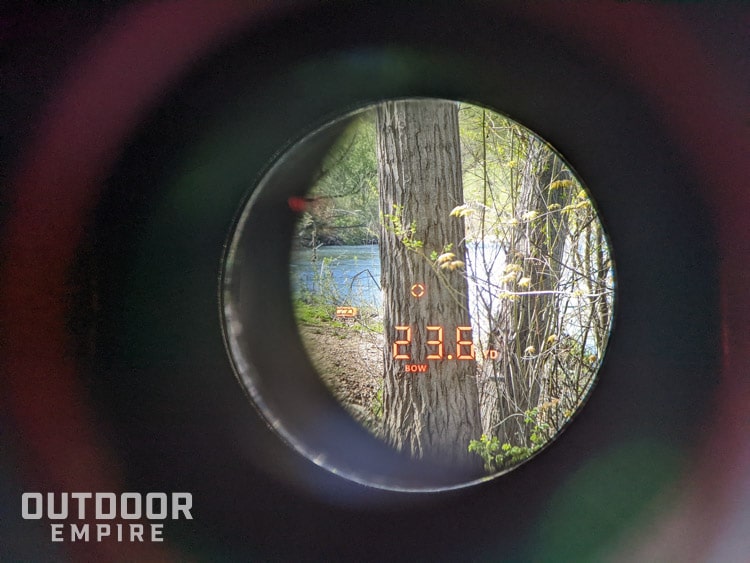
The other benefit of this unit is that it has the True Ballistic Range® with Wind feature so you can get all technical and calculate the level fire range distance you should aim for based on the cartridge and load you are shooting. It’ll even help you figure out the wind correction you need to dial into your scope.
It also has a BOW mode for archery hunters. While I don’t see myself using this feature much, it was easier to use than I anticipated when I tried it out.
Recommended: Detailed Leupold RX-1400i TBR/W Rangefinder Hands-on Review
What We Don’t Like
The biggest drawback of this unit is the warranty. Of all the big (and small) optics manufacturers, Leupold has the worst warranty on electro-optics, including their rangefinders. The warranty only covers defects for two years, and then you’re on your own.
Even still, I’m a big enough fan of everything else about this rangefinder, namely the value of what you get for what you pay. I highly recommend the Leupold RX-1400i TBR/W for everyday, practical rifle and bow hunters.
Upgrade Pick
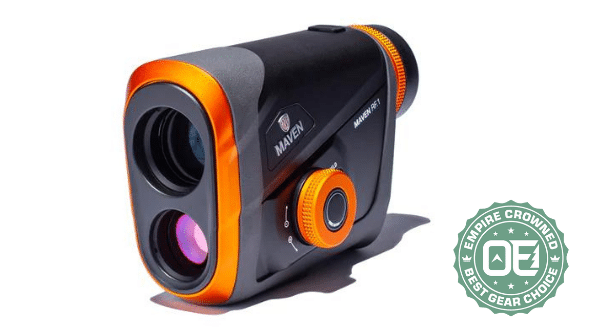
- Outdoor Empire Score: 4.7
- MSRP: $450.00
- Bottom line: Premium glass and warranty at a mid-range price
Compare prices at: Sportsman’s Guide, Optics Planet, Sportsman’s Warehouse, EuroOptic
To be honest, I didn’t know I wanted a Maven RF.1 until I got my hands on one. This rangefinder is amazing and it’s worth every penny!
It’s not the cheapest rangefinder out there, but it’s far from the most expensive. However, it is just as good or better than the other high-end rangefinders we looked at, and for a lot less money.
What We Like
The Maven RF.1 has the best price in its class. The laser sensor is of particularly high quality and demonstrated by its unrivaled max range of 4500 yards to a reflective target, or more realistically, 3000 yards to trees.
I hit hillsides at over 3200 yards with it in broad daylight when others would struggle to reach half their max range.
I also love the intuitive controls and bright red LED display. Unlike most rangefinders with two buttons, this one also has a dial to cycle through menu options and a switch to go between Forest and Field mode. These modes change the target priority on the fly without navigating a settings menu.
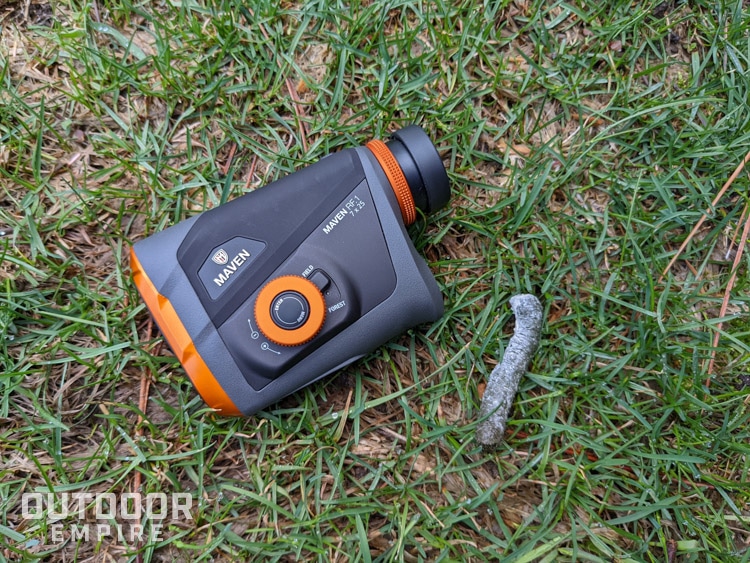
Besides that, it’s super rugged and backed by an unlimited lifetime warranty. Even if it’s your fault, they’ll repair or replace the unit without any BS.
Maven is still a small company based in a Western mountain town called Lander, Wyoming, where a human answers the phone. They’re innovative and only sell directly to consumers online, cutting out the middleman to keep prices low. Passionate hunters themselves, they’re the kind of business you want to support.
Recommended: Detailed Maven RF.1 Rangefinder Hands-on Review
What We Don’t Like
It might be hard for some to buy a premium optic without looking through it first. Maven has a cool loaner program so you can try it before you buy. Or just take my word for it that it’s awesome.
While the ergonomics are decent, the RF.1 is bulkier and heavier than most rangefinders we looked at.
And even though I don’t really care about advanced ballistics functionality and calculations, those who do appreciate that might be disappointed that this unit doesn’t have any of that like competing models from Leupold, Leica, or Sig.
Nonetheless, the Maven RF.1 nails the fundamentals and I recommend it to long-range hunters who appreciate premium glass without gimmicks. Or anyone that wants just to buy one really nice rangefinder in their life.
Also Great
- Outdoor Empire Score: 4.5
- MSRP: $399.99
- Bottom line: Like the RX-1400i, but more rugged and better glass
Big brother to the RX-1400i is Leupold’s best seller, the RX-1600i TBR/W. This includes a thoughtful upgrade to some of the main decision-making criteria over the RX-1400i and a little extra range.
It has upgraded glass with a larger objective lens and more powerful magnification (6x vs. 5x). And it is notably more rugged with an aluminum chassis and better armor.
This makes it feel better in your hand and adds some peace of mind, especially given Leupold’s sub-par warranty on electro-optics. But those upgrades do come at double the price.
The Leupold RX-1600i TBR/W is an excellent choice for guys or gals with a bit more money and time to spend in the field hunting and at the range shooting.
Best of the Rest
Compare prices at: Optics Planet, Sportsman’s Warehouse, Amazon, Bass Pro Shops, Cabela’s, EuroOptic
- Outdoor Empire Score: 4.7
- MSRP: $718.99
- Bottom line: Packed with tech for long-range precision rifle hunting
The Sig Sauer KILO5K is a premium, feature-packed, long-range hunting rangefinder. It measures distances faster than the others we looked at, and it has more sophisticated reticle options.
With Bluetooth, it can connect to Sig’s ballistics app and the Basemap hunting app, allowing you to drop markers at remote distances. This is a pretty cool feature for scouting. It also has onboard sensors for temperature and air pressure.
While it says its max range is 5000 yards to a reflective target, its max rating to trees is 2500 yards. I was able to hit trees at over 2700 yards with the Maven RF.1, and while it doesn’t have as many fancy techy features as the KILO5K, it costs a whole lot less and does the same job.
Compare prices at: Bass Pro Shops, Cabela’s, Brownells, EuroOptic, Palmetto State Armory
- Outdoor Empire Score: 4.7
- MSRP: $599.99
- Bottom line: The best from Leupold at a reasonable price
The RX-2800 TBR/W is another excellent option from Leupold with rave reviews. It has everything you’ll find in the RX-1600i, but with a longer max range, upgraded glass to 7×27, and a tripod mount.
While it doesn’t range as far as the Maven RF.1 and the menu isn’t as easy to navigate, it has the ballistics data and functionality that the Maven does not. This is an excellent choice for long-range hunters.
Compare prices at: Optics Planet, Sportsman’s Warehouse, Sportsman’s Guide, Amazon, Bass Pro Shops, Cabela’s, Brownells, EuroOptic
- Outdoor Empire Score: 4.3
- MSRP: $499.99 (usually around $400 in stores)
- Bottom line: Prolific and dependable, but lagging behind
I really liked the form factor and how rugged the Vortex Ranger 1800 is. I also love Vortex’s no questions asked warranty. This is a great product and you can’t really go wrong with it.
However, it just doesn’t measure out nearly as close to the advertised range as the Leupolds and the Maven and it takes longer to get a reading. The guy at Cabela’s uses this one and said he once ranged an elk at over 900 yards, but normally the best he sees is less than that. It’s still his favorite, though.
You get more bang for your buck with our top three picks.
By the way, the Vortex Ranger 1300 is discontinued now. Though you may still find one in stores, maybe even on sale.
Compare prices at: Sportsman’s Guide, Amazon, Optics Planet, Cabela’s, Bass Pro Shops, Brownells, EuroOptic
- Outdoor Empire Score: 4.2
- MSRP: $729.99 (available in stores starting at $500)
- Bottom line: Trusty, famous, proven
This is perhaps the most direct competitor to the Maven RF.1 with similar functionality, warranty, form factor, and durability.
The Vortex Razor HD 4000 has been available for long enough to have gained a lot of popularity, and it is an excellent choice for long-range hunters. However, it is more expensive than the Maven and it has a shorter max range and the interface is less user-friendly.
Compare prices at: EuroOptic, Palmetto State Armory
- Outdoor Empire Score: 4.2
- MSRP: $354.99
- Bottom line: Feels great in the hand, fast measurements
The Sig Sauer KILO rangefinders have perhaps the best ergonomics of all. They just feel really good in the hand.
The KILO1600BDX is the closest competitor to the Leupold RX-1600i TBR/W in that they have similar ranges, ballistics functions, and quality glass.
A big difference is that the Sig connects to a ballistics app and can even directly pair with Sig’s SIERRA BDX scope. But note that the software limits ballistics calculations to a maximum of 800 yards. You gotta buy the more expensive one to make it work farther.
When I tried it, the red LED display had a weird reflection inside the glass that was really annoying in low light.
This rangefinder is really fast, giving you a measurement almost instantaneously. It’s a worthy option for precision rifle shooters and Sig fans.
- Outdoor Empire Score: 3.0
- MSRP: $69.99
- Bottom line: Price is so good you almost have to try it
While I haven’t gotten my hands on the Tidewe HR-F700 hunting rangefinder just yet, thousands of reviewers on Amazon approve. And the specs and warranty aren’t bad either. If you’re on a tight budget but want a basic rangefinder that will function, the Tidewe appears to be a great choice.
It has a basic line of sight mode and angle-adjusted measurements, which is on par with mid-grade rangefinders. With a rechargeable battery and decent water protection, it’s my low-budget pick.
Others We Evaluated
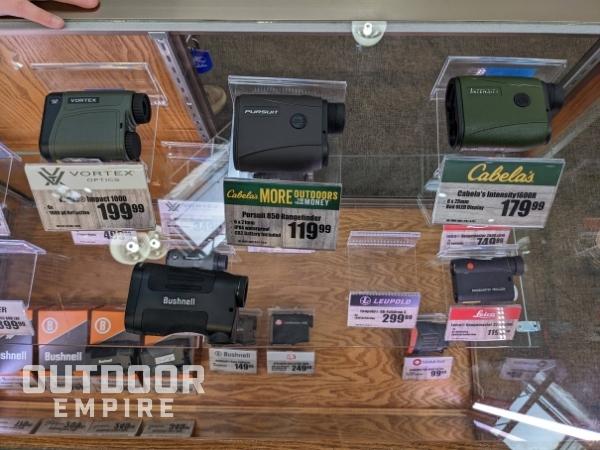
Here are some other rangefinders I looked at but didn’t include in the top picks. I researched all of these and tested some of them in the store.
| Product | Outdoor Empire Score (out of 5) | MSRP | Why It Didn’t Make the Cut |
| Leica Rangemaster 3500.COM | 4.3 | $1,249.00 | Awesome with techy features, but way too expensive compared to the Maven RF.1 which performs similarly |
| Bushnell Prime | 3.8 | 1300: $179.99
1700: $209.99 | Low-end materials and black LCD for the same price as the Leupold RX1400i |
| Vortex Impact 1000 | 3.5 | $269.99 | Felt lower quality than most Vortex products, poor LCD, sluggish, overpriced |
| Sig Sauer KILO1000 | 3.3 | $211.99 | Same as Vortex Impact, competitive products on Amazon for half as much, but people like it |
| Cabela’s Intensity 1600R | 2.8 | $179.99 | Only other one at this price point with a red OLED display, bulky, feels cheap, only basic features, just not as good as alternatives |
| AOFAR HX-700N | 2.5 | $89.99 | Great reviews on Amazon and excellent price, but weak specs don’t offer as much value as others |
| Cabela’s Pursuit 850 | 2.5 | $119.99 | Feels cheap, bulky, no frills, overpriced compared to similar items |
| Simmons Pro Hunter 750 | 2.3 | $99.99 | Bulky, very short range, very basic |
Why You Should Trust Us
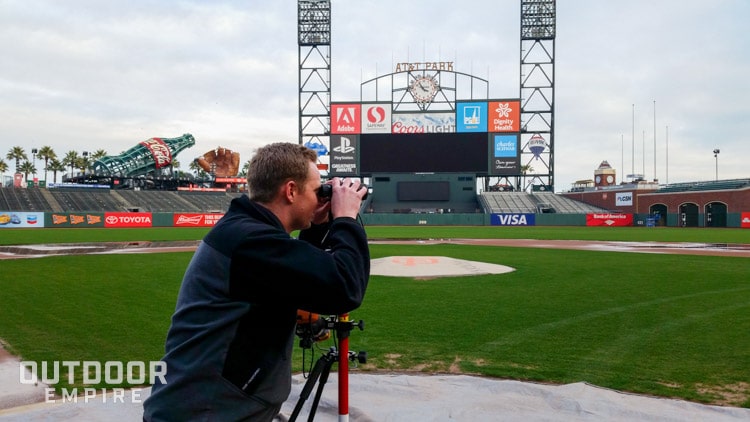
Previously in my professional career, I worked in the mapping and professional measurement industry. I helped land surveyors, civil engineers, mining companies, foresters, utility companies and various government agencies identify hardware and software solutions to help them with field data collection and mapping.
Among the many products I worked with were professional-grade laser rangefinders. I had the opportunity to train people on how to use them for everything from measuring heights of power poles to stockpile volumes.
From that experience, I learned what to look for in a rangefinder and it caused me to gain an appreciation for solid core functionality. My background allowed me to effectively filter out sub-par hunting rangefinders in favor of the best ones.
In preparation for this review, I reviewed dozens of rangefinders, closely evaluated and scored 18 of them, and tried many of those in the store and the field.
I also interviewed experts at the optics counters at Sportsman’s Warehouse and Cabela’s to get an idea of customer feedback, listen to their recommendations, and gather golden nuggets of insight.
The two rangefinders I recommend are the two I now personally use when I hunt or go to the shooting range.
Analysis and What to Look for in a Rangefinder for Hunting
Before shopping, determine some boundaries of what you need, what is nice to have, and what you don’t want. These external factors help narrow down what you’re shopping for and eliminate most of the hard decisions right off the bat.
When you evaluate each model, keep the following in mind.
Optics Quality
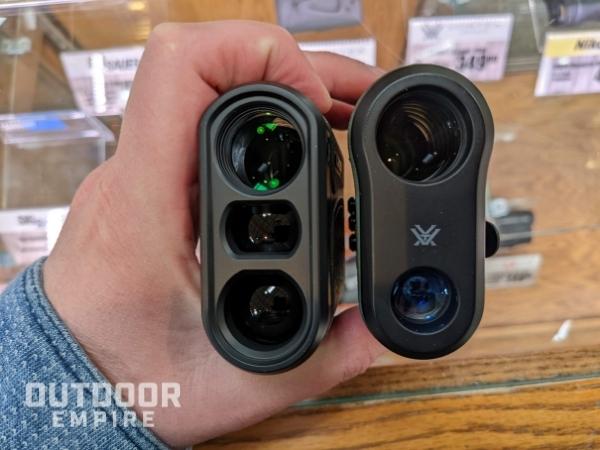
The longer you look through your rangefinder and the further away your targets are, the more you’ll appreciate good glass in the unit. Rangefinders are optics, just like scopes and binoculars, and there’s no substitute for good glass.
If high optical quality is important to you, then look for brands known for outstanding lenses. Generally speaking, Leupold, Sig Sauer, Bushnell, and Vortex are great starting places. Premium European brands like Leica and Zeiss have some of the best glass in the world.
Then there are the smaller up-and-coming brands like Maven, whose quality rivals that of the European optics giants and impressed me during this review in terms of light transmission and clarity.
Less expensive units typically have smaller lenses, lower magnification, and less special coating on the lenses.
Most rangefinders have a fixed magnification between 4x and 7x. This lets you see your target and get an accurate measurement while keeping the scope simple to operate but still usable.
If you’ll routinely use your rangefinder past 300 or 400 yards, consider getting one with a magnification of 6x or up. Hunters can generally get by just fine with 5x magnification.
The Leupold RX-1400i certainly had excellent quality for its price point, whereas I was a bit let down by the similarly priced Vortex Impact 1000. The mid-range units like the Leupold RX-1600i, the Vortex Ranger 1800, and the Sig Sauer KILO1600BDX were similar in specs and quality.
Display
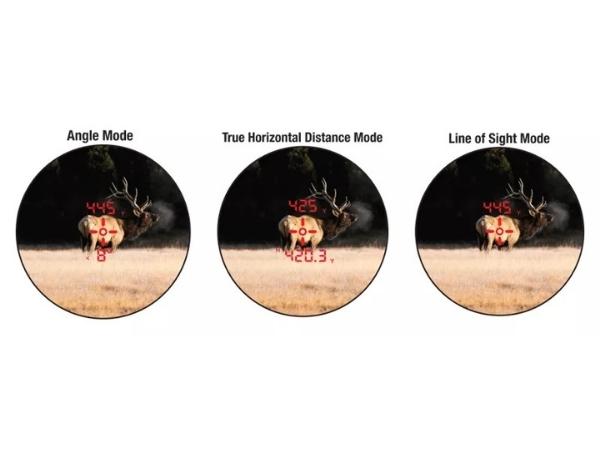
In my opinion, a red LED display is a must-have in a hunting rangefinder. They are markedly better than classic black LCDs, an older technology that is slowly being phased out.
You usually have to pay $300 or more for a rangefinder with a red display, except for the recommended Leupold RX-1400i and the lower scoring Cabela’s Intensity 1600R.
Anything cheaper had black LCD screens, which, when combined with lower-grade lenses that transmit less light, were difficult or impossible to read in low light. And all the more expensive units had red LED displays that were more than adequate.
I also look for a display that is not too crowded with information. Some of the most crowded displays we looked at are the Sig units, whereas Leupold seemed to do a better job at displaying what you need to see.
And Maven took this a step farther, dynamically turning certain outputs on and off to show you only what is most relevant at any given moment.
Menu Navigation
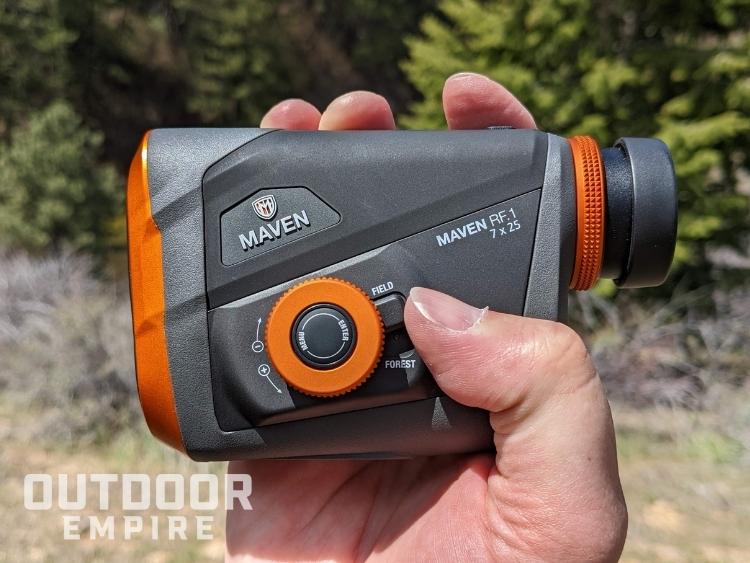
With only two buttons, most hunting rangefinders require a lot of button clicks to make changes to the settings, brightness, or modes. The units we tested mostly all work the same way, which is not entirely intuitive.
The one exception is the Maven RF.1, which is far more intuitive than the others. With more buttons and a dial, you can tweak settings way quicker, some without even entering the menu. The Maven is the only one where you could get away without ever reading the manual.
Reticle
Reticles are a lot like knives; simpler is better. Simple crosshairs are ideal until you really get familiar with your gear.
Many of the rangefinders reviewed give you several reticle options to select from. I lean toward a basic cross on the Leupold RX-1400i or a simple red dot on the Maven RF.1. Units like the Sig KILO5K have more complex reticles for more technical shooters, but these do not necessarily enhance overall performance.
Form Factor
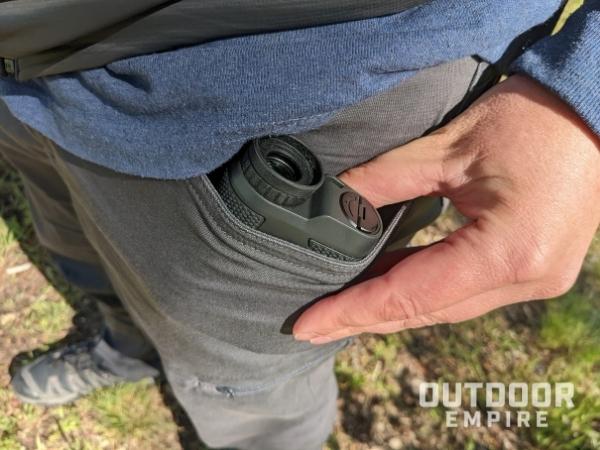
The size and shape of a hunting rangefinder are important for two reasons.
- It needs to be small enough to be held comfortably.
- It needs to fit where you plan on storing and carrying it.
It’s popular for hunters to string a rangefinder on a lanyard and hang it around their neck, stow it in a bino or chest pouch, or clip it to their belt or chest strap. This obviously works better with more compact units.
The bulkier units we tested include the Maven RF.1, the Vortex Razor HD 4000, the Cabela’s Pursuit 850, the Cabela’s Intensity 1600R, the Simmons Pro Hunter 750, the Tidewe HR-F700, and the AOFAR HX-700N. So basically, the low-cost units and a couple of the higher-end units with bigger, better glass.
The smallest, most ergonomic units were the Vortex Ranger 1800, the Sig Sauer KILO1600BDX, the Vortex Impact 1000, and the Sig Sauer KILO1000. The Leupold RX-1400i is just as small but perhaps not quite as ergonomic. The size of the rest of the units we evaluated falls somewhere in the middle.
Weight
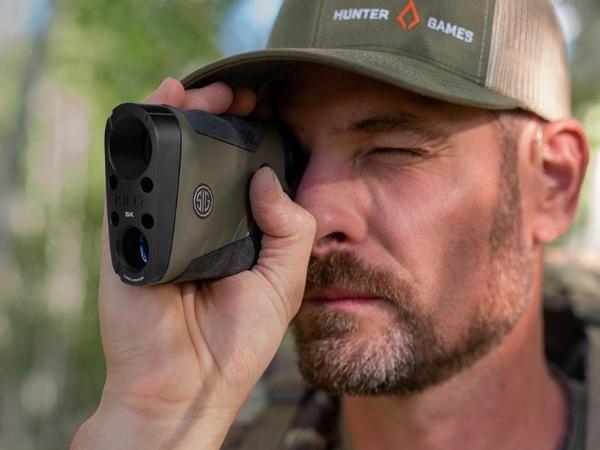
Weight is important because it limits how long you can hold it up and how you can carry it. Holding it for a minute in the store says little about how you’ll feel after day three of a high country elk hunt.
Choose the lightest model that fits your specifications but doesn’t skimp on features. You want to get less weight. It’s better to have a usable piece of gear that is an ounce or two heavier than an ultralight piece of junk.
The Sig KILO5K weighs an impressive 7.4 ounces even though it’s the most sensor and feature-packed rangefinders we looked at. Compare that to 10.1 ounces on the Maven RF.1, which weighs twice as much as the Leupold RX-1400i. Most fall somewhere in the middle.
Ruggedness
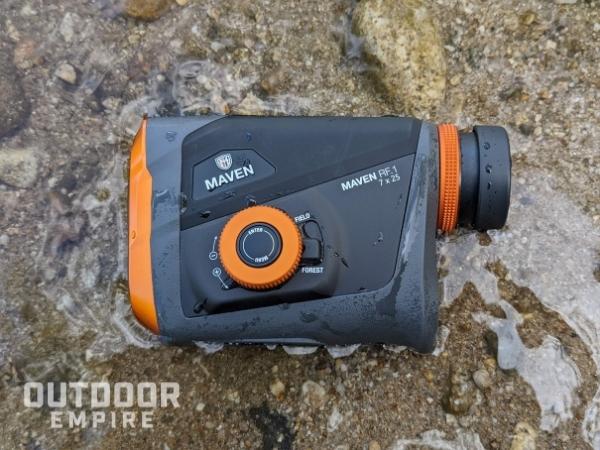
All things being equal, look for a rugged piece of gear. If you can’t take it under the rain or you have to worry about dropping it constantly, it won’t be as useful as something that takes a lickin’ and keeps on tickin’.
Don’t get too caught up on how waterproof or shatter-resistant this model or that model is. Just look for something that is reasonably tough. Bonus points for an awesome warranty.
The most rugged units have an aluminum or magnesium chassis with more robust polymer components, rubber armor, and waterproof seals.
Super tough units we looked at include the Maven RF.1, the Leupold RX-1600i and RX-2800, the Vortex Razor and Ranger, and the Sig KILO5K. The least rugged were the Cabela’s models and the Simmons. I thought the Tidewe looked pretty decent for a unit under $100.
Features
Different models have tailored special features designed to make their respective purposes easier. Decide your intended use for the rangefinder and research the available features. A certain company may have a setup you prefer once you have tested it.
Buyer beware. Avoid overpaying for things you may not use or something just nice to have.
Ballistics and Archery Calculations
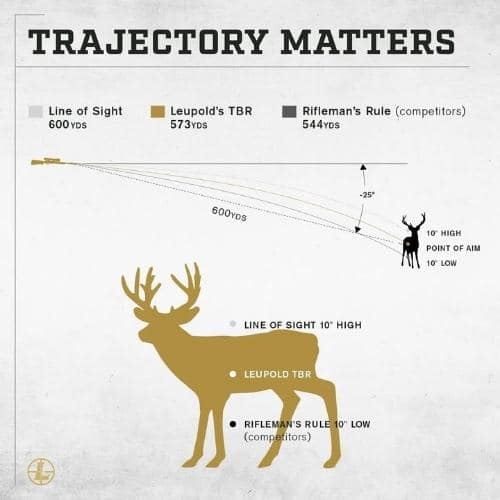
Some rangefinders have a whole bunch of features that help you predict shots and have ballistic reticles familiar to rifle scopes.
From displaying level fire range adjusted for the angle or steepness of the terrain to calculating windage and cartridge/load specific ranges, the big optics companies are incorporating more tech into their rangefinders. These are great once you get used to them but have been liable for more than one missed deer.
There are three categories of rangefinders with these features:
- No frills: just a line of sight distance
- Angle compensation: at least gives level fire range adjusted for the terrain, and often an angle which is especially useful for bowhunters.
- Advanced ballistics: cartridge, load, and sometimes weather adjustments
Most of the rangefinders we looked at fall in the second category with at least angle compensation. Those with advanced ballistics functionality include all the Leupold and Sig units, except for the Sig KILO1000. Though they do have that one in a BDX (Ballistics Data Exchange) version.
Maximum Range
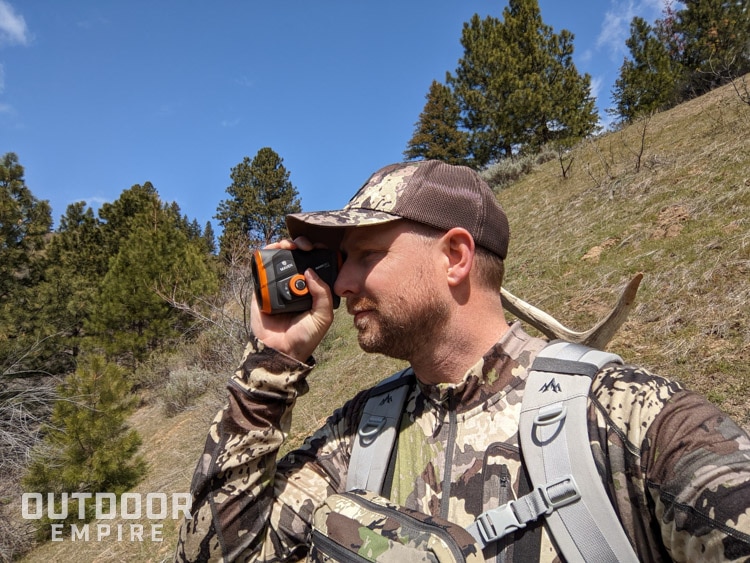
While maximum range is often touted as a key specification of rangefinders, I don’t see much added value in a rangefinder that goes out to 5000 meters as opposed to 1000. I’m a pretty conservative hunter, so as long as I can confirm a deer is within a couple of hundred meters, I’m good.
Though I will also want to range some farther distances to estimate hiking times or know how much I need to advance to get within shooting range of an animal. Far reaching rangefinders are particularly useful for long-range hunters, however.
Max range is more associated with the class and price range of a rangefinder than it is the quality. I mainly just want to have confidence in the measurements given by a unit.
Also note that if your unit laser targets out to 1000 yards but doesn’t have any magnification, most of its capability is wasted.
The unit we reviewed with the maximum advertised range to a reflective target was the Sig Sauer KILO5K, though the Maven ranges farther to trees and deer, so the RF.1 takes the cake here.
Understandably, the cheapest units have the shortest range of around 700 yards, though I would only count on measuring distances half that far.
The Bushnell Prime 1700 is competitively priced and has a solid range. Our top pick Leupold RX-1400i is sufficient for the majority of hunters.
Accuracy
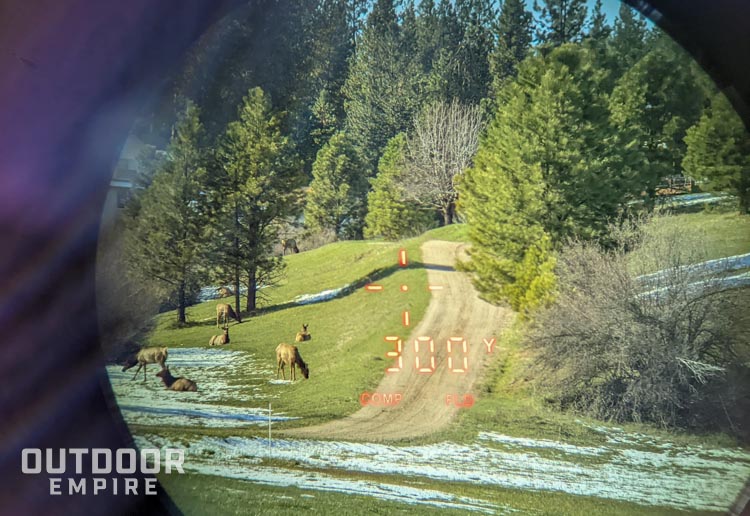
Some sports require more accuracy than others. A competitive shooter or long range hunter may want a minimum of +/- .5 yards.
When choosing a hunting rangefinder, keep these pointers in mind:
- Decide what you’re willing to settle for.
- Set a price range of what you’re willing to pay for.
- Get a unit that you can live with.
There are far more factors, including user error, that affect the accuracy of your rangefinder and the typical user will never use a unit to its absolute maximum performance anyway.
The Maven and the Leupolds provided measurements consistent with the advertised accuracy.
Target Priority

Target priority on a laser rangefinder means it is calibrated or customizable to find either an aggregate or a simple measurement. In layman’s term, you can choose for the unit to find the closest, farthest, or average distance that it is pointed at.
This is important because if you have a deer standing behind a tree, but the tree is 25 yards closer than the deer, you won’t have the tree messing up the measurement. For a precise measurement, this is critical to get right.
Generally, the thicker and the more varied your terrain is, the more essential this feature is. A farthest mode or the equivalent also helps improve performance in rain or fog, which is a huge challenge for any rangefinder since it fragments the laser light.
More and more units are moving to either a selectable or automatic target priority sensor to get more accurate results.
All the units we evaluated include some form of this functionality.
Scan and Horizontal Modes
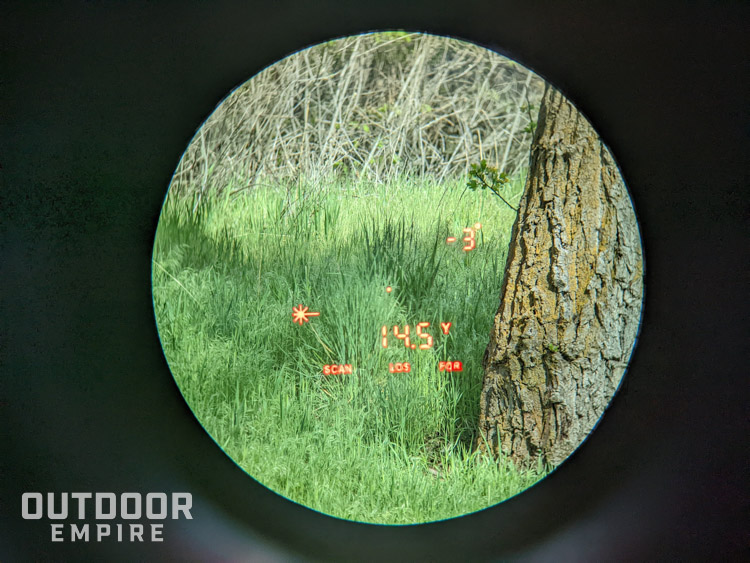
Scan and horizontal modes are essential only in certain situations.
If you need to collect a lot of data quickly about your surroundings, for example, if you’re turkey hunting with a bow and waiting for a gobbler to come in, then scanning the area and identifying landmarks in a hurry can be helpful.
Flipping the unit horizontally to look around a tree or have a better line of sight around an obstacle is somewhat overrated. You might never need to use your rangefinder horizontally, and paying more specifically for this feature is foolish.
Some models have it standard, but if it’s offered as an upgrade, steer clear and save your money.
Value
Optics and electronics have traditionally been a “get what you pay for” type of gear. But competition and direct to consumer brands have been shifting that in the hunting consumer’s favor.
An inexpensive rangefinder can give you all the information you need to make an accurate shot at a distance but may lack the refinements and features you want. Whereas some big name brands like Leica, Sig Sauer, Leupold, and Vortex cost more than necessary simply due to retail markup.
The $200 price point for a rangefinder seems to be the best for most folks because it has the greatest cost-benefit. The Leupold RX-1400i is substantially better than any unit for $200 or less and it even has some of the $300-400 unit features.
Same story for the Maven RF.1, priced at $450 but competes with units that cost twice as much or more. Most importantly, these units do the job.
So when you spend more, you enter the realm of the law of diminishing returns. This is where you pay a lot more for maginal enhancements. Personally, I try not to go there.
Warranty
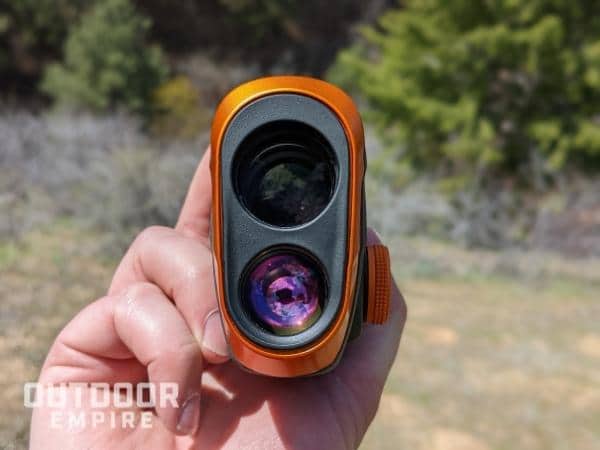
Buy from a company that offers at least a partial warranty. Everyone makes a lemon from time to time and you don’t want to be stuck with a broken piece of equipment because the manufacturer won’t replace it.
Most reputable brands offer a multi-year or lifetime guarantee on their product. Buy from them as much as possible.
Here is a list of best to worst rangefinder warranties from select manufacturers:
- Maven: unlimited lifetime, transferable, no proof required, personalized service
- Vortex: unlimited lifetime, transferable, no proof required
- Sig Sauer: unlimited lifetime on optics, 5-year on electronic components
- Bushnell: 5-year unlimited “product lifetime”
- Leupold: 2-year limited
Vortex and Maven promise to repair or replace your rangefinder for pretty much any reason. Short of intentional damage, loss, or theft, they will put an operable unit back in your hands, even if it was your fault that it broke. No receipts required, fully transferable, awesome!
This is particularly unique for an electronic device like a rangefinder and one of the reasons we named the Maven RF.1 a top pick. Unfortunately, there’s a fair amount of fine print on the other brands.
It’s too bad Leupold only covers rangefinders for two years, putting them at the back of the pack in terms of backing their product. While this leaves something to be desired, their rangefinders rock, and their pricing is excellent, so it’s a tradeoff.
Hunting Rangefinder FAQs
How do laser rangefinders work?
Rangefinders measure the linear distance between you and whatever you aim it at. When you trigger a rangefinder, laser light projects through the air in a cone shape with a rapid series of pulses. The farther the light travels, the larger the area of the circle of light, so to speak. So the laser is not just the size of a pencil lead out to infinity.
The rangefinder’s signal return sensor then receives back multiple return measurements based on the laser light being reflected back to it. These measurements can be from reflections of everything from particles in the air to solid objects like deer or trees.
The device then does some processing of the return data which includes things like the time it took for each measurement to reflect back and the intensity or strength of the return reading. It does some calculations to figure out which is the most correct distance measurement based on the mode the rangefinder is set to. Then it displays that measurement in the digital LCD or LED display through the eye piece. Typically, the measurement is given for the strongest reflection, usually a solid object or a highly reflective surface.
Though many display the weakest (farthest), strongest, or average return depending on the mode it’s in for different conditions such as rain, forest, or open terrain.
Some give extensive information about bullet or arrow placement or angles between you and your target, while others just give the line of sight distance.
What kind of batteries do rangefinders use?
Most laser rangefinders use a single disposable CR2 battery. These are easy to find online or in stores. You can even get longer lasting lithium or rechargeable CR2 batteries.
Some units come with onboard rechargeable batteries, just like a mobile phone. But the best hunting rangefinders still work with swappable batteries.
Are rangefinders legal for hunting?
There are few restrictions for hunters besides not having a rangefinder mounted on your bow in some states. It’s good to check with your local game and fish agency, but there is typically no problem with using a rangefinder for hunting.
Related:

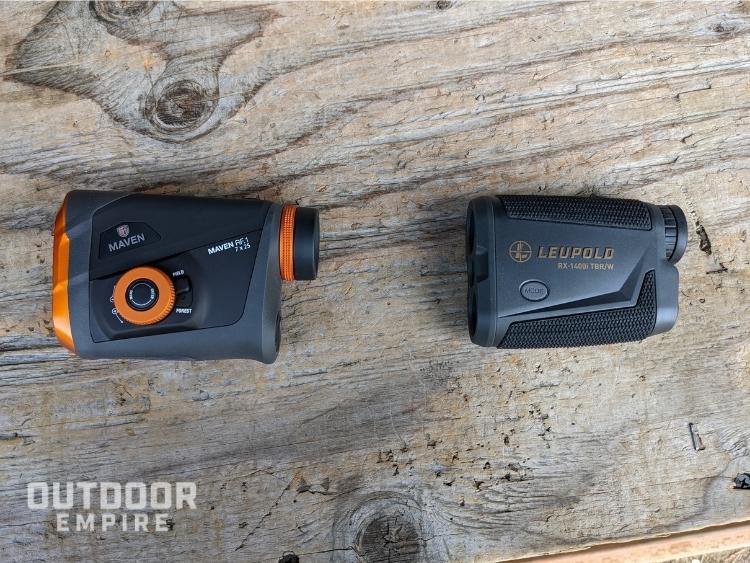
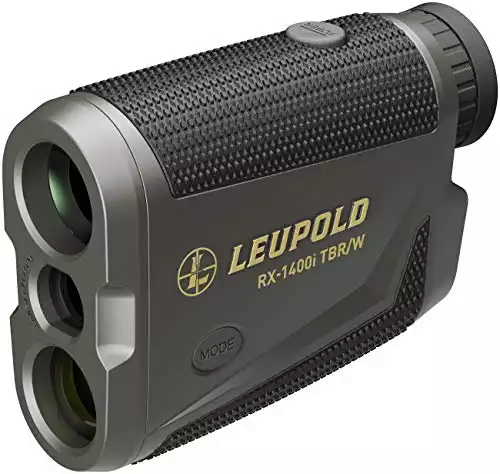
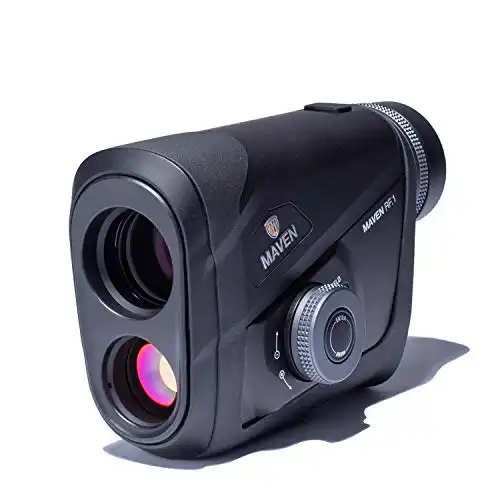
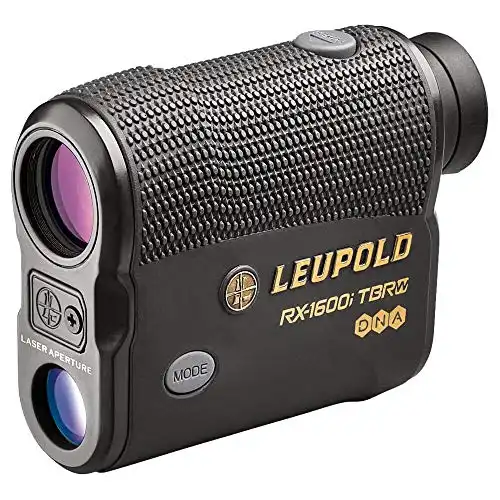
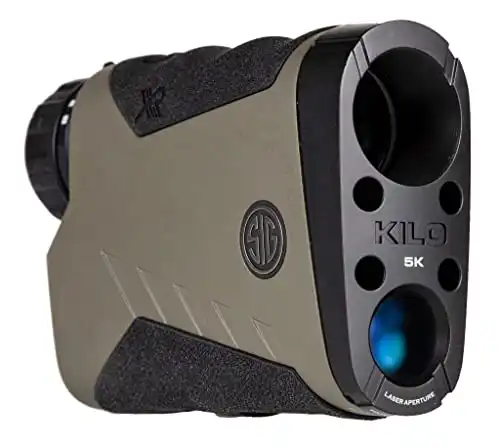



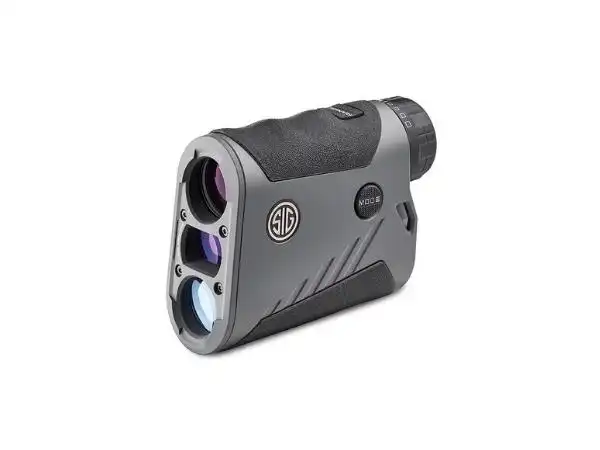
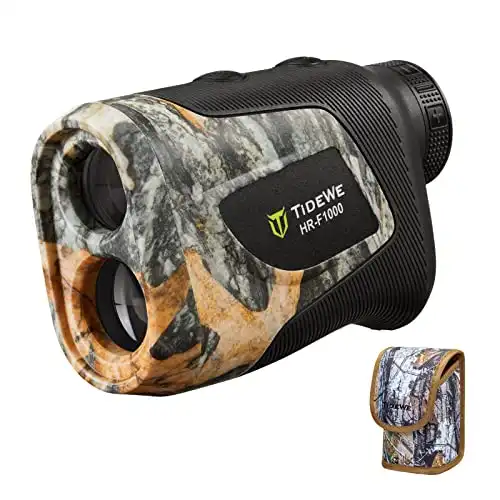
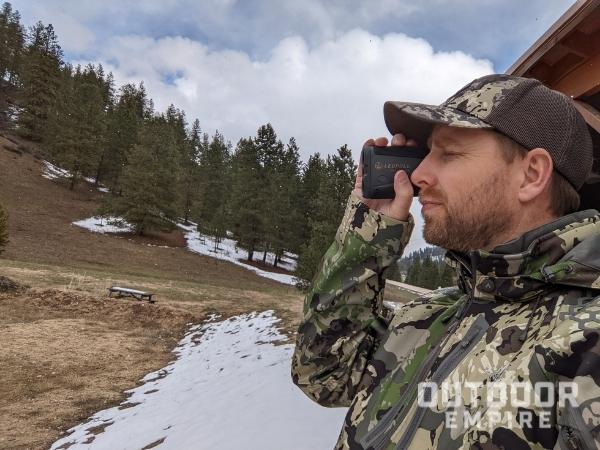
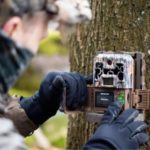



Comments are closed.